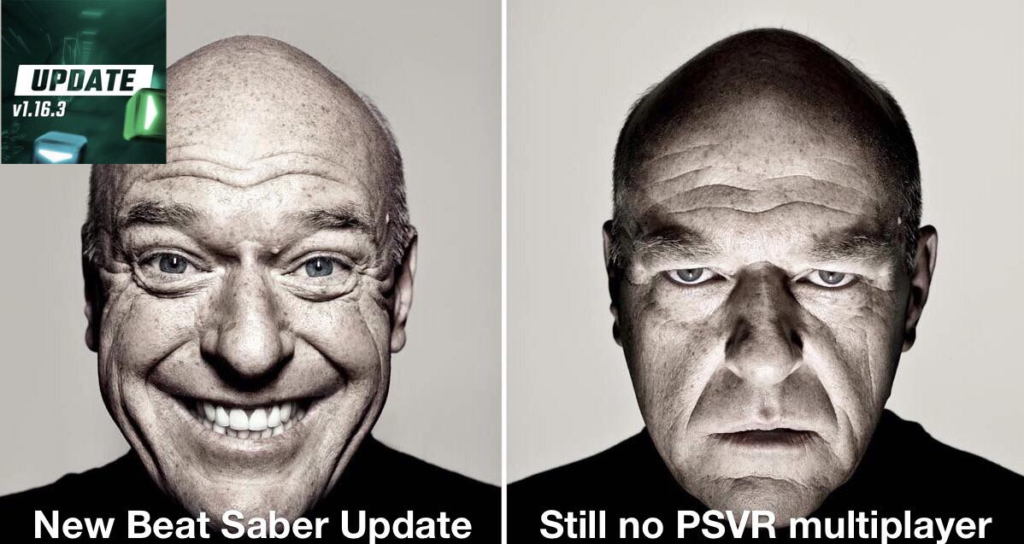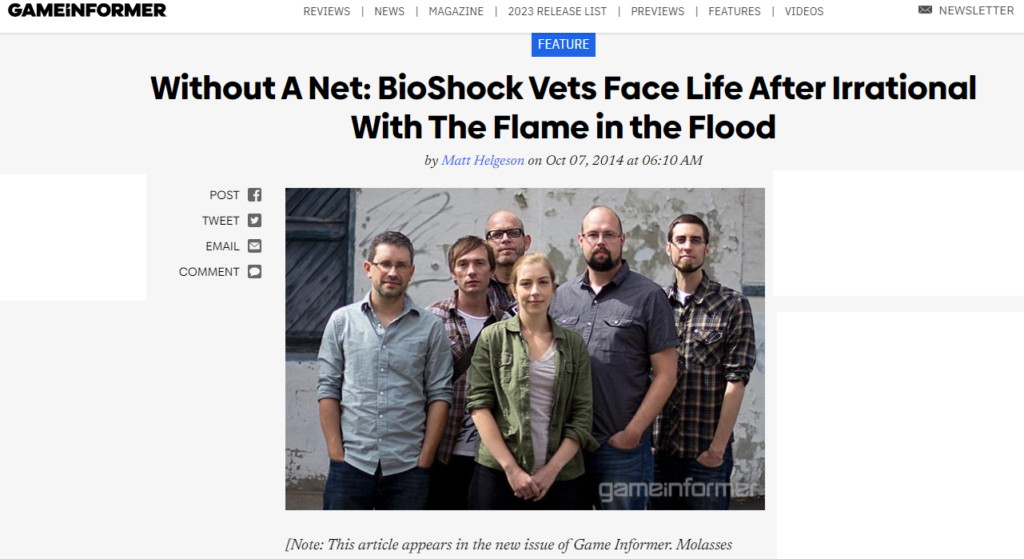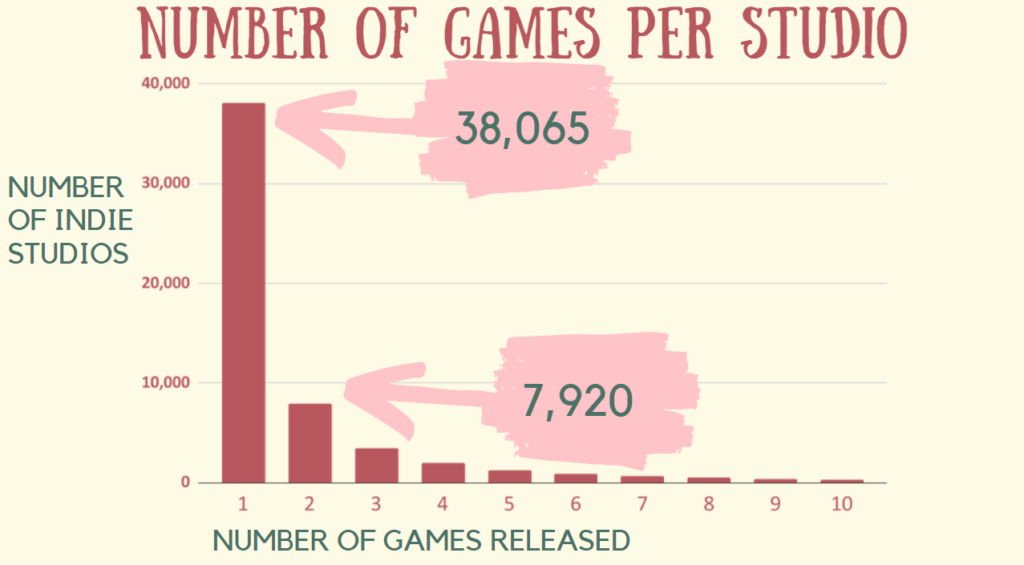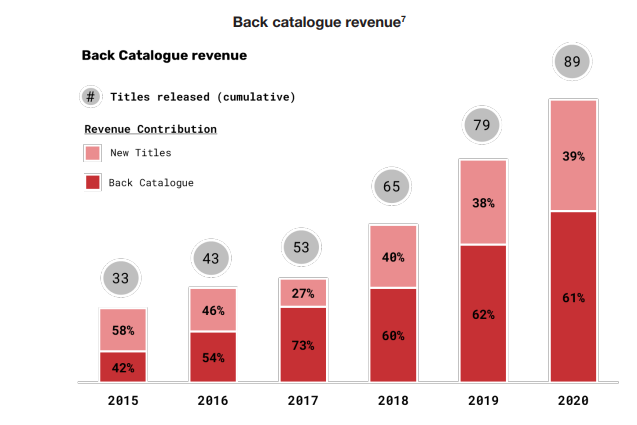
8 Quick Tips That Could Save Your Studio’s Life
It is so sad to see all the AAA layoffs. I am so sorry if you were affected.
If you need a slight bit of consolation, there was some research that the folks at Freakanomics did where they studied people who were thinking of quitting. The people who took the plunge and actually quit were much happier than the people who decided it was safer to just stick with the job they didn’t fully love.
I know this probably isn’t your exact situation because you did not willingly leave, but you probably at some time said “what if I struck out on my own?” This tragedy might actually be a wonderful thing for you.
If you do decide to use whatever severance you hopefully got and this extra time to make a game, this blog is for you. I am going to give you my 8 tips on how to make the transition from AAA to Indie.
I have consulted for a bunch of developers who left a AAA studio and started making their own game. Some developers had a rude awakening when they realized that Indie games do not always operate the way the AAA market does.
So I wanted to make a quick list of some of the adjustments you need to make to your AAA experience before diving in and trying to make and sell your indie game.
Lesson #1: The type of games that sell well from indie studios are quite different than AAA games
I am working on a longer talk about this, but the first lesson any indie game developer needs to learn is that successful Indie games are almost always completely different genres than AAA games. Indie game fans are almost a completely different audience than your fan base during your AAA time.
It isn’t just like “LOL indie games are cheap looking.” No, I mean the very nature of the game itself is different. The way they are played, and the motivations of the players are different.
Let me explain with a metaphor:

Single-player AAA games are kind of like Disneyland dark rides such as Pirates of the Caribbean. You jump in, you “go around” and experience this beautiful story told to you with the most immersive, beautiful art, and sound. There is a story, there is content that you see for only a few minutes, there are characters, there is an ending. Sure some AAA games are open world and you can experience that content in a slightly different order, but for the most part, the content is experienced one time.
The big mistake so many new indie developers who play a lot of AAA games make is they try to make a slimmed down version of a AAA game. They say “I don’t have the resources to make Assassin’s creed, so I will just make a 2D version of it.” or “I know I can’t make the Witcher so I will just make a shorter version of it with slightly inferior graphics.” AAA players want AAA games with AAA quality. People who want these experiences want a TON of content that is very high quality. The only companies who can satisfy them are AAA companies with hundreds of artists and designers and programmers.
You, as an indie, do not have the budget, or the number of developers required to replicate AAA games. The end result of indies trying to make indie versions of AAA games is similar to those people who tried to recreate Pirates of The Caribbean while stuck at home during the pandemic. Yes, it is cute and clever, but they won’t pay money for that. They will not buy “cheap” versions of AAA games.

Because indies cannot get close to AAA quality, the successful indie games don’t even try to compete against AAA. Instead indie devs target gamers who like different types of games. Successful indies make games in new genres where there is no linear adventure, there is no content to “ride past.”
In the genres that indies can succeed in, players are given a sandbox to play in and the player’s fun comes from smashing the different game elements together. I like to call these “crafty-buildy-sumlation-y games.” Successful indie games are city builders, 4X, colony sims, open world survival craft, and simulation games.
Successful indie games manage to provide hundreds of hours of content not because they have huge levels and hundreds of characters and enemies, but because the gameplay elements they create can be combined and recombined in infinite ways. Successful indie-scale games are typically giant spreadsheets where “content” comes from the stats (numbers), not the graphics. Successful indie games are almost endlessly replayable.

Instead of AAA-style “going around” dark rides, the genres that indie game developers can do well in are more like Erector sets or a box of random Lego bricks. The fun comes from how all these parts and elements can be combined to build their own thing. On Steam, indie game fans don’t care if your game is a little janky as long as you can give them tools and scenarios where they can build their own fun.
In AAA games, players inhabit a character such as this screenshot for Assassin’s Creed Mirage. You control a well animated character and you can chat with people, engage in combat, explore.
In the successful indie games, such as this screenshot of Wandering Village, players are more likely to inhabit a “mouse cursor” that clicks on what to build, or upgrade, or destroy. It isn’t about “going around” and exploring. Instead you are playing with the various elements to build something.
Let me repeat: it is very very very hard (even if your graphics are amazing) to successfully sell a game where you play as a 3D character running around solving puzzles and completing light-platforming sections.
Lesson #2: Running your own studio doesn’t mean you get to make the type of game you want
I know, you probably thought that forming your own games studio meant you could finally make the game you always wanted to make. Those hollow suits with MBAs who lived up in the C-suite of your company were out of touch with what gamers wanted and that is what led to the sorry state the industry is in now. That might be true, they might be out of touch, but I am also going to tell you that you can’t just make whatever game you want.
Indie game consumers don’t actually care that you “put your heart into it” or “gave it your best shot” or that you “made your dream game.”
Instead, your game’s genre, theme, and graphics determine 90% of the success. Even if you make a high-quality game, with “heart”, “passion”, and a “respect for players” if it is NOT in the right genre, it will not sell. I am sorry.
I think the biggest reason so many indie games fail is so many devs are making a game in the wrong genre.
Although, if this is just a hobby, if this project is just to hold you over until you land your next AAA job, or you have a rich dad and you don’t care about money, make whatever you want. You have my full support.
Next week I will list some genres and game types that you can make with an indie budget and team but this post is already going on too long.
Which leads me to my next point …
Lesson #3: Understand the other games in your genre
If you have played every major release since the NES you probably think you have a pretty good understanding of gaming. But, you need to understand that successful indie games are like subatomic particles that follow the rules of quantum mechanics as opposed to the blockbuster releases which follow the rules of general relativity.
You are making games for sub sub sub fan groups that have passionate understanding of what their genres are. You are about to experience game genres you probably have never heard of. You need to play them. Internalize them. Learn what fans like, what they don’t, and what they hate.
For instance, if you want to make a Visual Novel you absolutely must have CGs. If you don’t have CGs in your Visual Novel they will instantly hate you. You need to learn the anchors of your chosen genre and respect the fans.

Lesson #4: Art attracts but gameplay sells
Depending on your role and how long you have worked in AAA, you can probably create some amazing looking graphics – a vital asset for marketing your game. With great graphics you can make a compelling gif, a trailer, or even a screenshot, and you can go viral and rack up tens of thousands of
wishlists. Laysara Summit Kingdom was able to get over 11,000 wishlists with one reddit post because they have such beautiful graphics.
Be careful though, because as you know AAA studios are made up of very specialized individuals. If you were a full-time artist at a big studio, you can probably create industry-leading art but your gameplay design and development skills may be at beginner level.
I have consulted for several studios that were founded by AAA artists and the art was beautiful. However, the design and controls were not as strong as the art. So we could go viral with just about any post we made on social media, but as soon as someone played the game, they were put off because the controls were “janky” or the level design was “boring.”
As a result, the game collected hundreds of thousands of wishlists but at launch the game severely underperformed. Once players got their hands on the game they were disappointed by the gameplay design and the controls.
Reviewers complained about “janky controls,” prolific “screen tears,” “rigid characters,” and “unclear what type of game genre it is.”
You cannot fool Steam players with graphics. Your game must be as fun to play as the graphics are pleasing to the eye.
Lesson #5: Careful with the innovation
When you were stuck in another status meeting at your AAA studio you may have thought that Indies were revolutionizing the industry with out of the box thinking. You were going to take Genre A, mix it with Genre B, with a sprinkling of Genre C.
In actuality, successful indie games adhere to clearly defined genre tropes. Similar to CGs in Visual novels, every genre has expectations from the fans. If you stray too far from that genre’s formula they give you bad reviews and say you are out of bounds.
Here is one negative review for a game that didn’t have its genres clearly communicated. Notice how the fan picks apart with precision what genre and sub genre the game is and is not.

Fans love to box in games and they don’t like too much variation away from tried and true formulas. Know your place. By the way, “casual” is usually a negative for Steam players. Casual means you did not understand the genre well enough to give them a deeper experience. Adding other genres makes a game shallower not deeper. Fans of indie games are usually more impressed by a game that goes deeper and adds more complications to a well known genre, than they are by cross pollination with other genres.
As an example of how innovation happens, consider the fact that the iPhone was one of the most successful products in the history of the world. But when you line up the history of Apple products, you will realize that the iphone was just one evolutionary step beyond the previous version of the iPod.

Genres arise from incremental steps, not huge reinventions.
So how do you stand out from the other indie games? I have been analyzing what indie games sell well for years now, and these are the types of innovations that actually make fans excited:
- Take a popular game and change the setting (open world survival craft games do this all the time: V Rising is Vampires, Valheim is Vikings, Raft is open seas, Ark is dinosaurs.)
- Take a popular game that maybe had not so good visuals and drastically improve the graphics (This should be easy for you with your AAA credentials. Basically Dream Quest basically invented modern card battlers but had very rough graphics. Slay The Spire improved the graphics drastically and is now mis-remembered as the originator of the genre.)
- Take a 2D game and make it 3D (Example: Vampire Survivors is a 2D hit game and Soulstone Survivors made a 3D version of it) also (Forager is a 2D hit and Outpath made a 3D version of it)
- Take a 3D game and make it 2D (Example: Zero Sievert is a 2D version of Escape From Tarkov)
- Make a single player game and add multiplayer coop (Phasmophobia is a MEGA hit because they added 4-player coop to single player horror games)
- Make a multiplayer game single player (Again, Zero Sievert is a single player version of Escape From Tarkov – Some people don’t like the competition inherent in multiplayer games.)
- Take an old game that had a passionate audience but nobody has made a competent version of the game in decades (see BattleBit Remastered, and Paralives, and of course Stardew Valley. Careful with this though. Typically adapting a best selling Nintendo franchise for PC is a flop because most PC players didn’t play Nintendo growing up.)
- Take a game where the community is BEGGING the developer to add coop but the game doesn’t have it because either the developer doesn’t know how to or the code base was not originally coded for coop. Adding coop is what killed hit indie game Forager.
Notice how most of those innovations don’t really change the genre very much.
So my recommendation is to find an indie game that is fun. Then see if you can apply one of the above innovations to them.
For more reading on how innovation arrives and how new genres are created see my other posts here:
Lesson #6 Warning, you are underestimating how hard Indie-scale multiplayer is
With indie games, getting 1 person to play your game is hard enough, but to have a successful multiplayer game you need to get multiple people to play your game at the same time.
Even if someone likes your multiplayer game, if there are not enough players to fill a server, they will not play your game.
And then the game enters the death spiral and nobody plays it because nobody is playing it.
Even if you do manage to get a lot of people to fill a server the first couple of months, you must constantly add new content to make the levels feel fresh otherwise fans start saying “Dead Game.” I looked at every hit indie multiplayer game released in 2022 (there were only 13 of them) and found that by the end of the year, 8 of those games were considered “dead games” by the community because either cheaters overran the servers, or there wasn’t enough content, or not enough players.
One of the few indie multiplayer success stories is Battlebit Remastered and they built the game in public for free for nearly a decade before they got enough of a playerbase to achieve critical mass. I assume your severance package cannot last that long. Here is how BattleBit built a successful multiplayer game.
Here is a sampling of reviews for these dead multiplayer games.

One alternative that can work is co-op multiplayer. With co-op multiplayer you don’t have to fill a server. With coop, the fans bring their friends. You don’t have to worry about “Dead Servers”
In fact, if you are trying to find a successful idea for what game to make, just search Reddit for the phrase “Multiplayer When?” or “Coop when?”
You will find posts of fans begging developers to add coop to certain games. You have a built in audience if you could make a new version of that hit game built from the ground up with coop in mind. For example this guy made a whole meme about how much they want multiplayer beatsaber

Lesson #7 Parlay your credentials to announce your game
The press loves writing about AAA games. When you announce your game / studio, make a marketing beat out of it and talk about what you did on whatever AAA game you worked on. Back when Irrational dissolved, the press did loving stories about the development team formed in it’s ashes.

So normally I say get your Steam page up ASAP. But if you are a AAA vet, get something amazing put together first, pitch your story to lots of press studios, and launch your game’s steam page as part of that press push.
Lesson #8 Your first game will fail, your second will break even, several games later will be a hit
In AAA it is customary to have 2 year+ dev cycles before you release. You do not have this luxury. I know we share stories of a small dev team earning millions with their launch but that just isn’t common. Most studios do not make all their money from one game. You must diversify with lots of smaller games.
The saddest thing is that most studios will release one game, have it fail and never make another. I looked at every studio on Steam and graphed the number of releases they had. Most studios close after their first game launches. You need to build a reputation with fans across multiple games.

Look at financial report from indie mega publisher Devolver Digital. Most (61%) of their revenue comes from their back catalog. You must make multiple games to survive in this industry:

Expect your first game to “fail.” Budget for your first few games to barely break even. Work fast, build tech across several games. Don’t scope creep. Don’t think another year of polish will turn a lagging game around. You must ship faster, run leaner, cut more corners than in your AAA days. You are a lean micro studio, act like it.
Articles to read:
Summary
As a AAA dev, you have some great advantages over most indie developers who have no experience making games. I find that most successful indie developers typically have at least some time working in a game studio.
However, the former-AAA-turned-indie-devs that fail typically invest too heavily in trying to replicate the types of games, and development practices of AAA studios. You must learn how different indie games are.
What games are good?
If you still want to know what types of games to make, read this post: